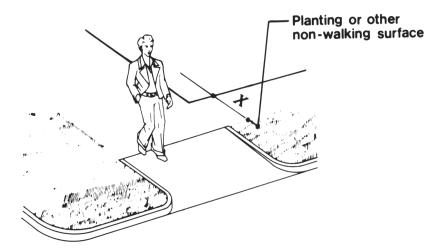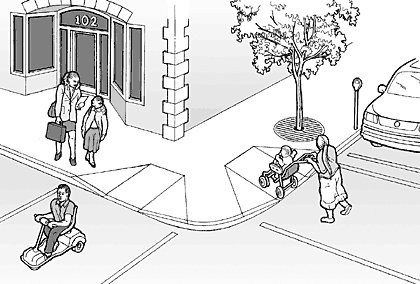As of 2001, there are over 54 million people with disabilities in the U.S., about 20 percent of the population. Almost half of these individuals have a severe disability, affecting their ability to see, hear, walk, or perform other basic functions. Most Americans will have direct experience of disability in their lives, either by being disabled themselves, or having a family member or friend who is disabled.
Individuals with disabilities are often educated and employed at levels below what they could attain. Modest accessibility improvements and assistive technology can allow them to achieve their full potential. The Americans with Disabilities Act (ADA), signed into law in 1990, guarantees equal opportunity for individuals with disabilities in public and private sector services and employment. Generally, the ADA bans discrimination on the basis of disability. Title II of the Act (Public Sector Services), in particular, requires that all private and public transportation systems be accessible. This includes pedestrian transportation systems, and provides guidelines for sidewalks and crossings.
A ubiquitous feature of design for accessibility is the curb ramp or "curb cut", which allows someone in a wheelchair to enter or exit a pedestrian crossing without needing to climb a curb. Though mandated by ADA and State laws for the disabled, curb ramps are just as valuable to those without true disabilities--think of a parent pushing a baby stroller, someone with a shopping cart, or a young child on a tricycle.
There are subtle issues in curb ramp design. For example, this design, where the edges of the ramp are not sloped, must be used with care. Someone walking into the ramp from the side may trip at the edge. This is a particular hazard for visually-impaired pedestrians and small children:

The best design at crossings is to have a separate ramp for each crossing direction, sloped in the direction of travel, and with sloped sides, as shown here:

The image above focuses on the ramps themselves; keep in mind that other design guidelines must be observed as well. The ramps must be entirely within the "furnishings zone" at the edge of the sidewalk, and must not encroach on the through pedestrian zone.
Though the detailed design guidelines for pedestrian accessibility are complex, ultimately they boil down to common sense. It's a sense that may not be "common", though, among people who have not personally experienced the difficulties faced by so many Americans. If possible, involve children, the elderly, and people with disabilities in your walkability surveys.